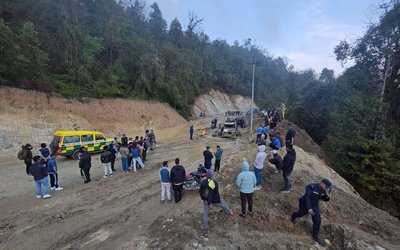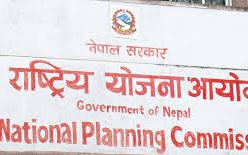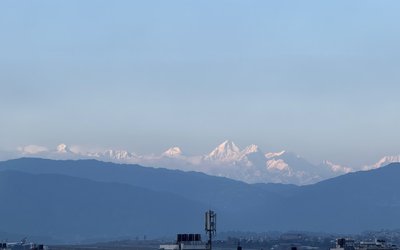
With strategic attempts and efforts of the last four years, Nepal Electricity Authority (NEA) is now on a spree of completion of various transmission lines, substations and hydro-electricity power projects. As the country’s largest substation started 3 years ago, Prime Minister K.P. Sharma Oli inaugurated the 400kV Dhalbekar Substation, connecting internal and trans-boundary transmission lines.
Stalled for years due to various obstructions at the local level, the speed has taken in the last three years also helped to complete 220 kV Danda-Kusma, a portion of Kaligandaki Corridor transmission line constructed under loan assistance from the Asian Development Bank’s SASEC project.
Although managing director Kul Man Ghising, who moved all the stalled projects mobilizing his highly qualified employees and colleagues of Nepal Electricity Authority, left NEA last August completing his four-year tenure, acting managing director Hitendra Man Shakya is now in the chair to accelerate the speed.

Former MD Ghishing at site
Having worked in NEA, holding various positions, acting MD Shakya, who also knows the ins and outs of the organization, has started his job of driving NEA at the previous pace. Along with organizing the inauguration programs, Shakya also needs to address many other projects which are facing various hurdles at the final stage of completion due to the COVID-19 pandemic.
400 kV Dhalkbar Substation
At a time when Nepal’s 456 MW Upper Tamakoshi Project is in the final stage of completion, the inauguration of 400 kV, Dhalkebar Substation; Nepal’s largest substation, by Prime Minister K.P. Sharma Oli is highly important.
Following the completion of the substation, Nepal will be able to supply electricity generated by Upper Tamakoshi. Similarly, this substation will also help to import electricity up to 800 MW during the lean season and export the same amount of surplus electricity to India during the wet season.
Spread in 13 bighas of land, the 400-200 kV station will pave the way for the export and import of electricity to India. It can play a key role in the distribution of electricity to the east and west along with India.
The event was attended by ministers for Energy, Water Resources and Irrigation Top Bahadur Rayamajhi and Urban Development Minister Prabhu Sah,
“Congratulations #Nepal for the inauguration of the country’s largest substation that would facilitate high volume cross-border electricity trade. We are proud to support major parts of the substation & linked high voltage lines & remain committed to boosting the Flag of Nepal’s electricity sector,” tweets Faris H. Hadad-Zervos, World Bank Country Director for Maldives, Nepal, and Sri Lanka.
As a part of the trans-boundary transmission line project, the World Bank has provided loans for the transmission line. However, Nepal Government and Nepal Electricity Authority solely financed the recently completed modern sub-station Based on Gas Insulated Technology -- Dhalkebar substation is the largest electricity hub of Nepal.
Constructed at the cost of Rs. 2.20 Billion of NEA and Nepal government, 400-200 kV substation has transformer capacity of 635 MVA and another 315 MVA’s transformer is under the process of installation.
Following the charge of the substation, Nepal and India have now the first 400 kV cross-border transmission line with the capacity to exchange up to 1000 MW. This sub-station is also important for Nepal’s internal power management. After the completion of 400 MW Hetauda-Dhalkebar-Inaruwa transmission lines, the substation can transfer 200 MW each to Hetauda and Inaruwa.
Other functions of the substation are to distribute the electricity generated by 456 MW Upper Tamakosi to east and west Nepal and evacuated from Gongar-Khimti-Dhalkebar 220 kV transmission line. Till the completion of the Hetauda-Dhalkebar-Inaruwa 400 kV Transmission line, the substation can distribute up to 300 MW of electricity to east and west through the existing 132 kV transmission line.
Now, Nepal can export surplus electricity to India. Constructed with a provision of further up-gradation in the future, the Arun III project will also supply 100 MW free electricity to Nepal from the Dhalkebar substation later.
Despite various obstructions including floodwater inundation and the COVID-19 crisis, the project has been completed in 3 years’ record time. The consultant of the project was an NEA Engineering, a subsidiary company of NEA.
Earlier, the World Bank and NEA financed the 220-132 substation in Dhalkebar under Nepal India Transmission and trade project. The substation was recently strengthened and expanded further aiming to enhance the bilateral exchange and trade.
“This is a major achievement in the country. We are now in a position to import surplus electricity to India and Bangladesh,” said Prime Minister Oli. He said that the Nepal government will facilitate more private sectors to invest money in hydropower development.
220-kV Dana-Khurkot Transmission Line
Just a week after the inaugural of the country’s largest sub-station, Prime Minister Oli inaugurated the construction of the 220-kV Dana-Khurkot transmission line and sub-station under the Kaligandaki corridor transmission line project in Kusma.
Minister for Energy, Water Resources and Irrigation Top Baldur Raymajhi and Environment and Development Minister of Gandaki Province Bikas Lamsal and NEA’s acting managing director Hitendra Dev Shakya were present on the occasion.
Prime Minister Oli said that NEA has made major achievements in the past few years making Nepal a country to export electricity to India. He said that this project will help evacuate the power generated in these areas.
Addressing the program, acting MD Shakya said NEA is also working hard to complete the second phase of the project as early as possible. The two structures have been ready for operation after the installation of equipment and successful test of the transmission line.

Project Chief Chandan Kumar Ghosh said that charging of the sub-station and transmission line has been completed. The substation and transmission line is ready for the electricity connection.
Nepal Electricity Authority had started construction of the Dana-Khurkot transmission line on May 30, 2016, with the financial support of the Asian Development Bank. Tata-Chint Electronic JV had got the contract to construct the 39.6-Km long Dana-Khurkot transmission line along with sub-station at Rs 2.90 billion.
Around 110 towers were constructed for the same and the latest modern technology has been installed at the sub-station. The power produced from the Ghalemdi hydropower project has already been connected at the sub-station after the successful charge of the transmission.
Five-MW Ghalemdikhola and 13.4 MW Thapakhola hydropower projects under the Dana sub-station are in operation. A target was set to complete the project within two years; it was delayed by two years due to various reasons. The sub-station has been spread on around 156 ropanis of area. The test of a six-kilometer long transmission line connecting Khurkot to Kushma Municipality-8 Chuwa of Parbat has been successful.
A substation and transmission line has been constructed to connect the electricity generated from the Kaligandaki and its tributaries flowing through the northern region of Myagdi and the hydropower project to be constructed in Mustang to the central grid.
A transmission line from Khurkot to Bardaghat is being constructed as per the target of constructing a 142-Km transmission line from Dana of Myagdi to Bardaghat of Nawalparasi. Acting MD of Nepal Electricity Authority (NEA) Hitendra Dev Shakya said that the completion of the project will help to evacuate the energy generated in the projects under construction in the Kalgandaki corridor.
He said that the construction of the Kusma-Bardaghat and New Butwal portion is undergoing now and it will also complete in time. Acting MD Shakya said that the transmission line evacuates over 400 MW of power from the corridor.
NEA Leakage Control
At a time when NEA is bringing more electricity to the national grid through the construction of various projects, it is also working to control the leakage. Acting MD Shakya directed NEA’s officials to focus on power leakage control, revenue collection, and electrification, improving service delivery with customers and meeting the given targets.
Signing the performance agreements with the heads of distribution and customer service centers, he said that electricity leakage control and service delivery improvement is the priority. The top management of NEA signed performance agreements with the heads of 23 distribution centers under the provincial office of Province-2, Janakpur.
Manoj Kumar Singh, head of the regional office, signed the performance agreement with Hitendra Dev Shakya, Acting Managing Director of NEA. Meanwhile, the chiefs of distribution centers have signed an agreement with Harraj Neupane, Deputy Executive Director of the Directorate of Distribution and Customer Service of NEA.
In the performance agreement, control of electricity leakage has been given high priority giving it 50 points. The arrangement has been made to reward or punish the chief of distribution centers by objectively evaluating the performance indicators.

The NEA has set a target of reducing the leakage of electricity to 8.5 percent in the current fiscal year. Last year, the leakage towards distribution was 10.28 percent. The target has been set to reduce the leakage of electricity from 15.6 percent in the last fiscal year to 12.08 percent in the current fiscal year of the distribution centers under the Provincial Office Janakpur.
The leakage till November is 16.6 percent. The heads of each distribution center under the office have been given separate targets for leakage control, said NEA. The Janakpur Provincial Office collects 31.23 percent of the revenue from the sale of electricity.
With more transmission line projects under the process of completion, NEA is now looking to reduce power leakage. Recent activities of NEA have shown that a strong and dedicated team in management can bring a lot of changes to a government utility.
- NEPAL-THAILAND: Joint Business Council
- Apr 13, 2025
- BIMSTEC SUMMIT: Nepal’s Stand
- Apr 11, 2025
- IME GROUP: Expands Into Paper Industry
- Mar 24, 2025
- CPN UML: Instigated By India
- Mar 23, 2025
- ADB’S CHIEF ECONOMIST: Nepal Reduces Poverty
- Mar 11, 2025















